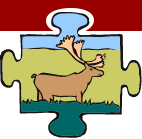
|
|


HUMAN HEALTH AND COMMUNITY WELLNESS Indicators Current Knowledge There are only a few monitoring programs which include community wellness, such as the Lutsel K'e monitoring program, which is conducted from a community and traditional knowledge perspective. Two other community wellness monitoring programs related to diamond mining include a collection of health indicators that try to assess overall community wellness. The Department of Health and Social Services is developing a framework and a list of indicators to monitor population health and well-being. This will be likely be completed in 2006. At present, there is not common approach to measuring human health and wellness in the NWT. Predicting and defining human health and community wellness is problematic for many reasons including: changing societal norms; lack of baseline data; inconsistencies in definitions; annual variability in data; depth of data collection, etc. In the NWT, in particular, cultural diversity and rapid economic development make monitoring human health and community wellness especially difficult. Some people suggest that human health and community wellness should be two separate categories for measurement. Discussion on this VC continues and it will be refined. Current Monitoring
Gaps and Recommendations This summary is based on: A Preliminary State of Knowledge of Valued Components for the NWT Cumulative Impact Monitoring Program (NWT CIMP) and Audit. February 1, 2002; updated February 2005. For more details, you may also want to look at:
|
|
|